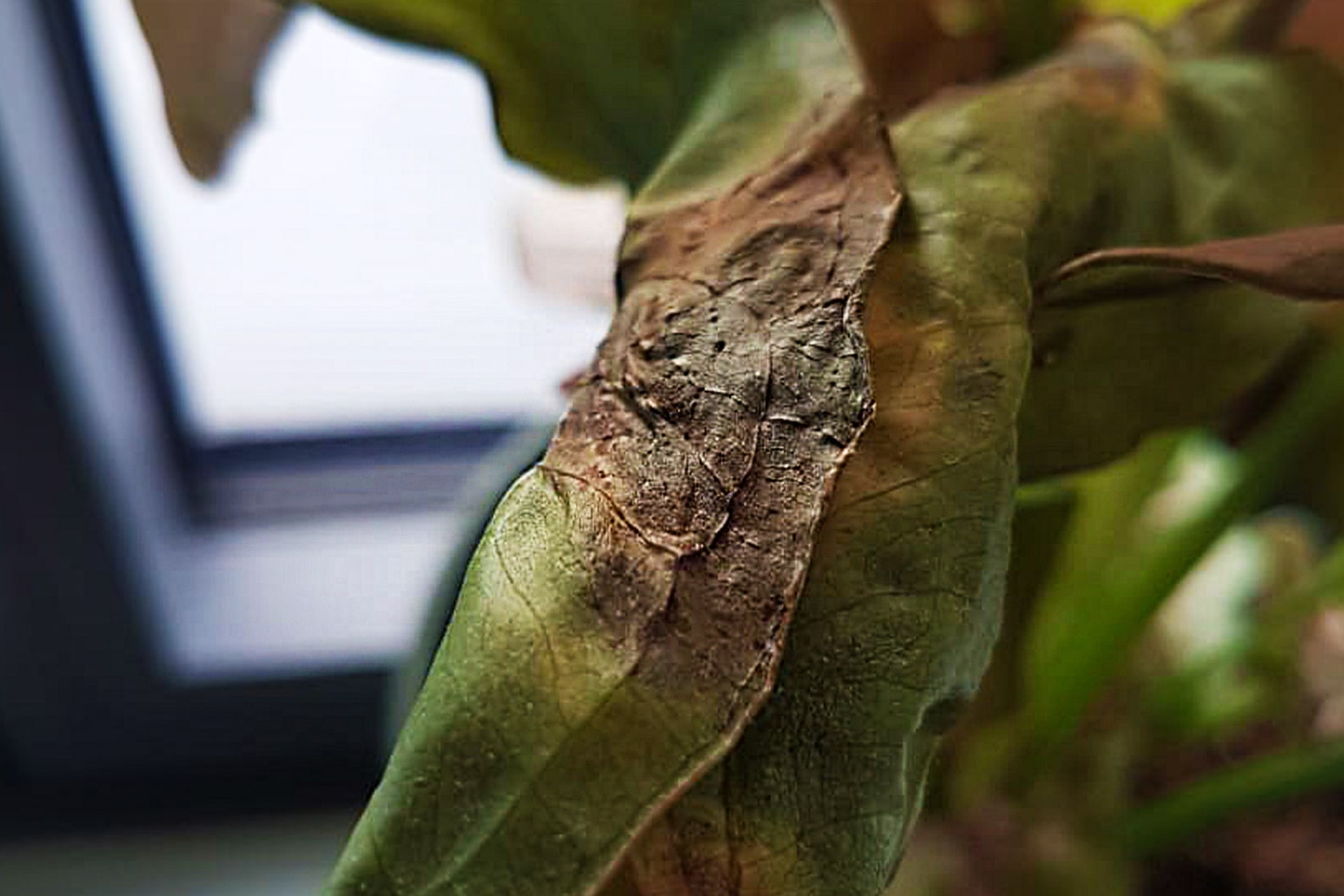As an Amazon Associate, I earn from qualifying purchases.
Leaves of outdoor plants turn brown due to inadequate watering or extreme weather conditions. Pests, diseases, and poor soil can also contribute.
Brown leaves on outdoor plants indicate underlying issues that need immediate attention. Watering inconsistencies, such as overwatering or underwatering, often cause this problem. Extreme weather conditions, like intense heat or cold, can stress plants, leading to brown leaves. Pests and diseases also play a significant role, damaging foliage and affecting overall plant health.
Poor soil quality, lacking essential nutrients, can further exacerbate the issue. Addressing these factors promptly helps restore plant vitality and ensures a lush, green garden. Regular monitoring and proper care are essential to prevent brown leaves and maintain healthy outdoor plants.
Common Causes
Brown leaves on outdoor plants can be worrying. Understanding the common causes helps in addressing the issue effectively. Here are some of the most common reasons why your plant leaves might be turning brown.
Watering Issues
Watering issues are a frequent cause of brown leaves. Both overwatering and underwatering can stress plants.
- Overwatering: Too much water can suffocate roots. This leads to poor nutrient absorption.
- Underwatering: Not enough water causes dehydration. Leaves turn brown and crispy.
To avoid watering issues, check soil moisture regularly. Water your plants when the top inch of soil is dry.
Nutrient Deficiencies
Nutrient deficiencies can also cause brown leaves. Plants need various nutrients to stay healthy.
| Nutrient | Symptoms |
|---|---|
| Nitrogen | Yellowing leaves, poor growth, and brown edges |
| Potassium | Yellowing edges, brown tips, and weak stems |
| Magnesium | Yellow patches between veins, brown spots |
Use a balanced fertilizer to ensure your plants get all necessary nutrients. Follow the instructions on the package for the best results.

Credit: www.reddit.com
Environmental Factors
Outdoor plants thrive best in the right environment. Sometimes, environmental factors can affect their health. Leaves turning brown often signal issues. Let’s explore two key environmental factors that could be causing this problem.
Sunlight Exposure
Plants need sunlight to grow. But too much sunlight can harm them. Direct sunlight for long hours can scorch leaves. This causes them to turn brown.
Make sure to check how much sunlight your plant gets. Some plants need partial shade. Others need full sun but not for too long.
| Plant Type | Sunlight Needs |
|---|---|
| Shade-loving | Indirect sunlight or partial shade |
| Full sun | At least 6 hours of direct sunlight |
| Partial sun | 3-6 hours of direct sunlight |
Observe your plant’s sunlight needs. Adjust its position if needed.
Temperature Extremes
Extreme temperatures can also cause leaf browning. Too cold or too hot weather stresses plants.
- Cold temperatures can freeze plant cells.
- Hot temperatures can dry out leaves.
Check the weather forecast often. Move potted plants to safer spots if needed. Protect them from freezing nights and scorching afternoons.
Keep these environmental factors in mind. Your plants will stay healthy and green.
Pest Infestations
Seeing your outdoor plant leaves turn brown is troubling. One common cause is pest infestations. Pests can cause significant damage to plants. This damage often results in browning leaves. Identifying and treating these pests is crucial for plant health.
Insects
Insects are a major cause of leaf damage. They feed on plant sap and tissues. Common culprits include aphids, spider mites, and caterpillars. These pests puncture the leaves, leading to brown spots and edges.
- Aphids: Small, soft-bodied insects that cluster on leaves and stems.
- Spider Mites: Tiny arachnids that create webbing and suck plant juices.
- Caterpillars: Larvae of moths and butterflies, they chew on leaves.
Fungal Diseases
Fungal diseases also cause leaf browning. Fungi thrive in warm, moist conditions. They infect leaves, causing spots and wilting.
Common fungal diseases include:
- Powdery Mildew: White, powdery spots on leaves that turn brown.
- Leaf Spot: Dark spots that spread and cause leaves to brown and fall.
- Rust: Orange or brown pustules on the underside of leaves.
Regularly inspect your plants for pests. Early detection can save your plants from severe damage. Use appropriate treatments to control pests and fungi. Healthy plants have a better chance of thriving and staying green.
Improper Soil Conditions
Improper soil conditions can cause your outdoor plants’ leaves to turn brown. The quality of the soil directly impacts plant health. Poor soil conditions hinder nutrient absorption. Below, we explore two common soil issues: soil pH and drainage problems.
Soil Ph
Soil pH measures the acidity or alkalinity of the soil. Most plants thrive in soil with a pH between 6.0 and 7.0. If the pH is too high or too low, plants struggle to absorb nutrients.
| pH Level | Effect on Plants |
|---|---|
| Below 6.0 | Too acidic; nutrient deficiency |
| Above 7.0 | Too alkaline; nutrient lockout |
Test your soil’s pH with a home kit. If needed, amend the soil to balance its pH. Use lime to raise pH or sulfur to lower it.
Drainage Problems
Poor drainage causes water to pool around plant roots. This can lead to root rot, making leaves turn brown. Ensure your soil drains well. Sandy soil drains quickly but may need more water. Clay soil retains water but may need better drainage.
- Check for standing water after rain.
- Use organic material like compost to improve drainage.
- Consider raised beds for better water management.
Good soil conditions are vital for healthy plants. Addressing soil pH and drainage problems can prevent brown leaves. Healthy soil means healthy plants.
Over-fertilization
Over-fertilization is a common problem for outdoor plants. It can lead to brown leaves. Adding too much fertilizer can harm your plants. Plants need nutrients, but too much can be bad. Let’s explore two main issues caused by over-fertilization.
Salt Buildup
Salt buildup happens when you use too much fertilizer. Salts from the fertilizer stay in the soil. These salts can harm plant roots. They block water from reaching the roots. This causes the leaves to turn brown.
Signs of salt buildup include:
- White crust on the soil surface
- Brown leaf edges
- Stunted plant growth
To fix salt buildup, you can flush the soil with water. Use plenty of water to wash away the salts. This helps the roots absorb water again.
Nutrient Burn
Nutrient burn is another problem from too much fertilizer. It happens when plants get too many nutrients at once. The leaves can turn yellow, then brown, and look burnt.
Signs of nutrient burn include:
- Yellowing leaves
- Brown tips on leaves
- Crispy, burnt edges
To help your plant, stop adding fertilizer. Water the plant deeply to flush out extra nutrients. This can help the plant recover.
| Problem | Signs | Solution |
|---|---|---|
| Salt Buildup | White crust, brown edges, stunted growth | Flush soil with water |
| Nutrient Burn | Yellow leaves, brown tips, crispy edges | Stop fertilizing, water deeply |

Credit: www.reddit.com
Physical Damage
Outdoor plants often face various challenges that can cause their leaves to turn brown. One of the primary reasons is physical damage. Physical damage can come from multiple sources, each affecting the plant differently. Understanding these can help you protect your plants and keep them healthy.
Wind Damage
Wind damage is a common issue for outdoor plants. Strong winds can tear leaves and break branches. This can cause the leaves to turn brown and wilt. Wind can also dry out the soil, making it hard for plants to get water. Protecting plants from harsh winds is essential.
- Use windbreaks like fences or shrubs.
- Place plants in less windy areas.
- Regularly check for wind damage and prune damaged parts.
Animal Interference
Animal interference can also cause physical damage to plants. Animals like deer, rabbits, and birds may eat leaves or break branches. This can leave plants vulnerable and cause the leaves to turn brown.
To protect your plants from animals:
- Use physical barriers like nets or fences.
- Employ repellents that deter animals.
- Regularly inspect plants for signs of animal damage.
Keeping a close eye on your plants and taking protective measures can reduce physical damage. This will help maintain the health and beauty of your outdoor garden.
Chemical Exposure
Outdoor plants often face various challenges. One of the main issues is chemical exposure. Chemicals can damage plant leaves, causing them to turn brown. Two common culprits are herbicides and pesticides. Let’s explore how each affects your plants.
Herbicides
Herbicides are chemicals used to kill weeds. Unfortunately, they can also harm your plants. If herbicides drift onto your plants, the leaves may turn brown.
Common symptoms of herbicide damage include:
- Brown leaf edges
- Leaf curling
- Stunted growth
To protect your plants from herbicide damage:
- Avoid spraying on windy days
- Use protective barriers
- Read and follow label instructions
Pesticides
Pesticides are chemicals used to kill pests. They can also cause browning of leaves. Overuse or incorrect application harms plants.
Signs of pesticide damage include:
- Leaf burn
- Discoloration
- Leaf drop
To minimize pesticide damage:
- Apply during cooler parts of the day
- Follow dosage recommendations
- Use eco-friendly alternatives
:strip_icc()/watering-codiaeum-variegatum-cd364c0e-31236e73b69b4578a94834e7e7467b6b.jpg)
Credit: www.bhg.com
Preventive Measures
To keep your outdoor plants healthy, preventive measures are essential. Brown leaves can be a sign of various issues. Taking proactive steps can help maintain plant health. Below are some effective preventive measures.
Regular Monitoring
Regular monitoring is crucial for plant health. Check your plants daily or weekly. Look for signs of stress or disease. Early detection can prevent bigger problems.
- Inspect leaves for discoloration.
- Check soil moisture levels.
- Look for pests like aphids or mites.
Proper Plant Care
Proper plant care is vital for preventing brown leaves. Follow these steps to ensure your plants thrive.
- Watering: Ensure consistent watering. Avoid over-watering or under-watering.
- Soil: Use well-draining soil to prevent root rot.
- Fertilizing: Apply the right type of fertilizer for your plants.
Watering Guide
| Plant Type | Watering Frequency |
|---|---|
| Succulents | Every 2-3 weeks |
| Flowering Plants | Once a week |
| Vegetables | Every 3-4 days |
Regular watering helps prevent leaf discoloration. Always check the soil before watering.
By following these preventive measures, you can keep your outdoor plants healthy and vibrant. Regular monitoring and proper care are key to preventing brown leaves.
Frequently Asked Questions
Why Are My Plant Leaves Turning Brown?
Brown leaves can result from various issues. Common causes include insufficient watering, excessive sunlight, pests, or nutrient deficiencies. Check soil moisture and sunlight exposure.
How Do I Fix Brown Leaves On Plants?
Start by identifying the cause. Adjust watering, provide proper sunlight, and treat for pests. Use appropriate fertilizers to address nutrient deficiencies.
Can Overwatering Cause Brown Leaves?
Yes, overwatering can lead to root rot, causing brown leaves. Ensure proper drainage and allow soil to dry between waterings.
Do Pests Make Plant Leaves Turn Brown?
Pests like aphids and spider mites can damage leaves, causing them to turn brown. Regularly inspect and treat plants for pests.
Conclusion
Brown leaves on outdoor plants often signal underlying issues. Address watering, sunlight, and soil quality for healthier plants. Regularly inspect for pests and diseases. With proper care, your plants can thrive and display lush, green foliage. Remember, consistent attention and timely intervention are key to vibrant and thriving outdoor plants.

